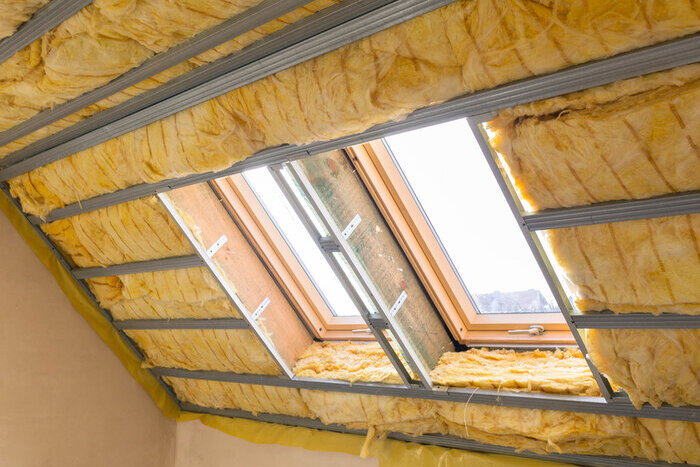
Fall and winter are the times when your home will need to work overtime. This means that it's about time to check on your attic insulation and make sure it's up to par.
After all, a poor insulation leads to energy loss, which then leads to higher bills.
The insulation in your attic will degrade over time. If you've been noticing your energy consumption going up, it may be time to replace the insulation.
But first, there are important pointers you need to know before insulating an attic. Read on to make sure your attic is ready for insulation and how you can prepare it.
An attic serves an important purpose in the insulation and ventilation of the whole house, but for homeowners, it has another purpose in storage terms. It's spacious, making it perfect as a room for storing old items.
If you're planning to add an insulation for attic rooms, though, you must clean your attic first. Not only will it make working in the attic easier but it will also allow you to add an insulation to the floor.
You may have to add some insulating material to the floor. This is one of the cheapest ways of insulating the attic, so you also have to consider doing this.
To do this, you'll have to remove the plywood to do a proper job. With this in mind, look for another spot in your house that can store your items in the meantime.
Next on your to-do list is to evaluate your attic to spot if there are any problems you need to address first. For example, the size of your rafters may not be up to the current building codes, or there are some compromised structures within your attic.
You may need the help of an architect or a builder to make sure. They'll be able to see if there are things that need fixing and provide a solution for you.
This step is crucial; you don't want your roof to fall on you when winter comes. The insulation will prevent the roof from warming, which then makes the snow above melt at a slower rate. For this reason, the snow load increases faster, putting your roof at risk of collapsing.
This will cost you money, but it's still cheaper than when your roof collapses. It's much less dangerous and inconvenient, too.
While evaluating the condition of your attic, you'll also come across your current insulation. Check if it's wet or damp; these are signs that you're dealing with moisture issues, such as a roof leak.
This is also the time to throw away any bad insulation material - those that are moldy, stained, or compressed. If you see a loose grainy insulation with shiny flecks, this could be vermiculite, which might contain asbestos. You don't want to remove this yourself as it poses a risk to your family and neighbors; it's best to call a professional instead.
When you add insulation, you don't want the heated or cooled air escape outside, do you? This renders the insulation useless, which is why you should make sure to seal all holes, gaps, and cracks.
Check around the attic windows, ducts, wires, exhaust fans, and chimneys. Use a spray foam, but for gaps 1/4" or less, use caulk.
Still, remember that your attic needs some sort of ventilation. You may talk to a professional to assess your ventilation system.
The R-value specifies the insulation level, which measures the insulation's thermal performance. The R-value differs per material and thickness, which is also something you should check when evaluating your current insulation.
The recommended R-value for your home depends on where you live and the climate. On hot climates, the minimum is R-30, whereas it's R-38 for temperate climates and R-49 for cold climates. To know the recommended value for your state, check the U.S. Department of Energy website.
After doing these steps, your attic should be ready for insulation. The only thing left to do is to choose what material you're going to use. You'll have to take into account the attic insulation cost and the R-values here.
Let's discuss the 2 most common types used in insulating attics.
Batts and rolls are great materials for a DIY insulation of the attic, and it's somewhat inexpensive as well. As for installation, you fit these into studs, beams, and joists.
You have different material options for this type of insulation with varying R-value per inch:
Each material offers different advantages; for instance, fiberglass is cheaper, but cellulose won't irritate the lungs or skin. Mineral wool is fire-resistant, and cotton is good for blocking sounds.
If you have spaces with irregular shapes, loose or blown-in insulation materials may be better for this job. They're also great for filling around obstructions. The installation methods for this type is blowing it using a special equipment or pouring it in.
As with the batts and rolls, you have different material options as well:
The fiberglass option is cheaper here as well, and it's lighter than the other 2. Loose mineral wool is also still fire-resistant, but as you would expect, it costs more.
The most common out of the 3 is cellulose, but you have to make sure to not expose it to moisture. It's susceptible to growing mold and rotting.
These are pretty much all you need to know before insulating an attic. The next step is to learn how to insulate attic spaces, which is useful information if you plan to do it yourself.
You can also visit us and discover some of our other blogs and guides for additional help. If you need expert help, don't hesitate to contact us now. We'll provide you with the best attic solutions.